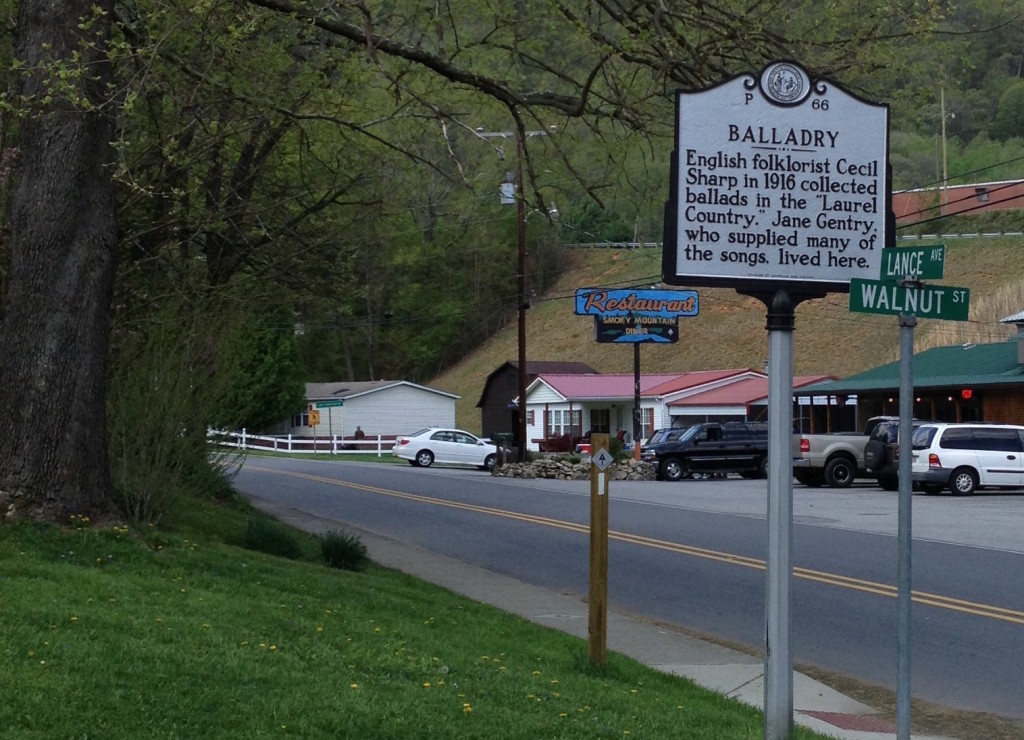
I’ve written before about traditional ballads and ballad collectors, but I always feel as though I am discovering new things about the way in which songs are written and passed down. The archetypal music developed (not written) by singers in places as diverse as rural England and western North Carolina and continuing into modern day provenance via folk singers like Dylan and Leadbelly, who then inspired a whole generation of rock musicians to embrace the ballads…
I always feel an electric shock when I find an artifact of balladry. In September 2015 I was lucky enough to discover UVa professor Ernest Mead’s copy of UVA professor and Glee Club alum Arthur Kyle Davis’s More Traditional Ballads of Virginia in a local used book store, documenting the work that he and other members of the Virginia Folklore Society did in collecting ballads from Virginia singers. Last week I had a bill for dinner delivered to me in an 1879 book collecting English ballads (albeit a little heavily focused on lords and kings for my tastes). And of course my discovery years ago that I have western North Carolina’s preeminent folklorist, Bascom Lamar Lunsford, as a distant relative was one of my early connections to the tradition.
What’s interesting to me is that the application of this “oral tradition” to other forms of song, like camp meeting songs and minstrel songs, resulted in some of the most enduring songs that we remember today in the context of universities and student songs. It’s one thing to note that the University of Virginia song “Glory to Virginia” is a football song with words set to the tune of “The Battle Hymn of the Republic.” It’s another to note that the “Battle Hymn” itself takes a tune that was previously known as “John Brown’s Body,” featuring words collectively written by the members of the 2nd Infantry Battalion of the Massachusetts militia as a marching tune. But the story doesn’t stop there; the “Tiger” battalion used a tune for their words that had originated as a camp meeting song in the late 18th and early 19th century, “Say, Brothers, Won’t You Meet Us,” with the earliest printed version of the tune appearing from 1806 to 1808 in camp meeting song compilations. And beyond that, credit for the inspiration of the tune is given to an African American wedding song from Georgia, a “Negro folk song,” and a British sea shanty that originated as a Swedish drinking song.
All of which is just to say that authorship is complicated and history is everywhere.
